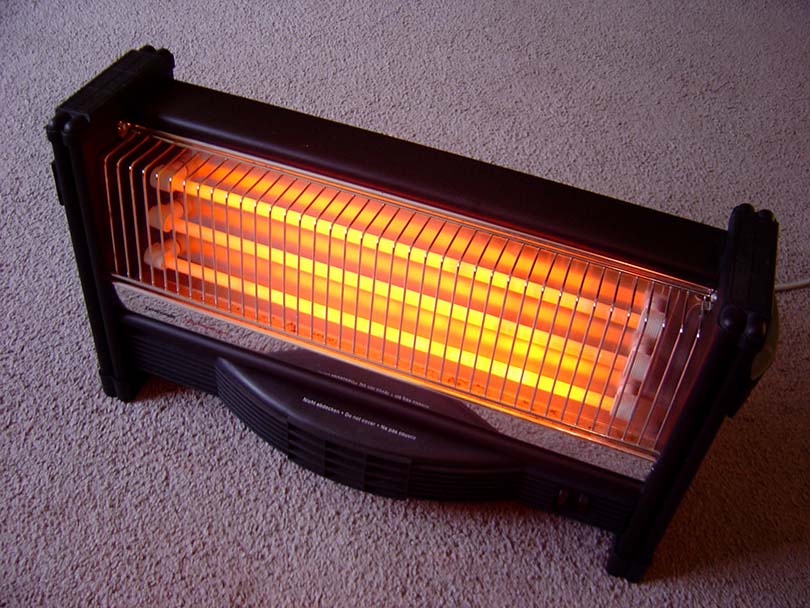How to use space heaters efficiently
By Patrick Keegan
In the dead of winter you might be considering supplemental heating options to warm your home. It can be more cost-effective to run a space heater than to turn up your central heating, but if you’re not careful you may increase your electric bill.
Generally, it is best to run a space heater when you need to heat just one or two rooms, or if you need temporary heat in a normally unheated area like a garage or shed. If you have a particularly cold-sensitive person in the home, it can be more efficient to use a space heater in the room they most often occupy rather than overheating the whole house.

Example of Infrared Space Heater. Photo Credit: Freeimages.com/Ryan Bourne
However, be mindful of the costs that these little heaters can add to your electric bill. Nick Rusnell, an energy advisor with HomeWorks Tri-County Electric Cooperative in Portland, Michigan, said, “During an energy audit, I found three 1,500-watt heaters in the house of a co-op consumer with a high bill complaint. I did a cost analysis for him and he was shocked.”
Do your own calculations for how much running one, two or three in your home would cost. And beware the efficiency hype around space heaters: electric space heaters are all 100 percent efficient at turning electricity into heat, but an ENERGY STAR air-source heat pump can be 300 percent efficient.
If a space heater is right for you, remember a few things to save energy and money:
- If you’re using a space heater to heat the one or two rooms you use most, turn down your central heating so you don’t heat up rooms you aren’t using.
- Close doors to rooms that are being heated to avoid heat loss.
- Turn off the heater when not in use or get a space heater with a timer feature.
- Purchase a heater with thermostat settings and use the lowest setting that you are comfortable with.
- Select a space heater that is the right size for the space you need to heat; most will have a sizing table on the box.
Due to safety and air-quality concerns, portable propane and kerosene space heaters are not recommended for use in a home or other unventilated area. Even when installed properly, these types of heaters can emit low levels of carbon monoxide. Instead, look for an electric space heater; there are two main types:
Infrared heaters: Radiates heat to the objects and people directly in front of it, rather than the air in the room. If you are often sitting in one place, such as at a desk, this can be a good option. Note that the surface of these heaters can get very hot.
Convection heaters: Uses convection to warm and cycle the air in a room. These heaters are relatively quiet and can be warm to the touch, but not so hot as to burn you. Some models use fans to push the air over warm coils; these heaters can warm a room faster, but are usually noisier.
If you need a space heater to keep your home comfortable, this may be a sign that your home needs insulation or air sealing, both of which can be great investments and significantly reduce your energy bills. You can consider simple short-term measures, such as:
- Putting in weather stripping around drafty doors and windows.
- Hanging thermal curtains or blankets or installing window film.
- Using rugs to cover uncarpeted floors.
In the longer-term, increasing your home’s insulation or switching to a more efficient heating system, such as a ductless heat pump, can be a more cost-effective solution. A good energy auditor can help you figure out the best measures to take to keep your home comfortable. If your co-op offers free or discounted home audits, take them up on it.
Patrick Keegan writes on consumer and cooperative affairs for the National Rural Electric Cooperative Association.

